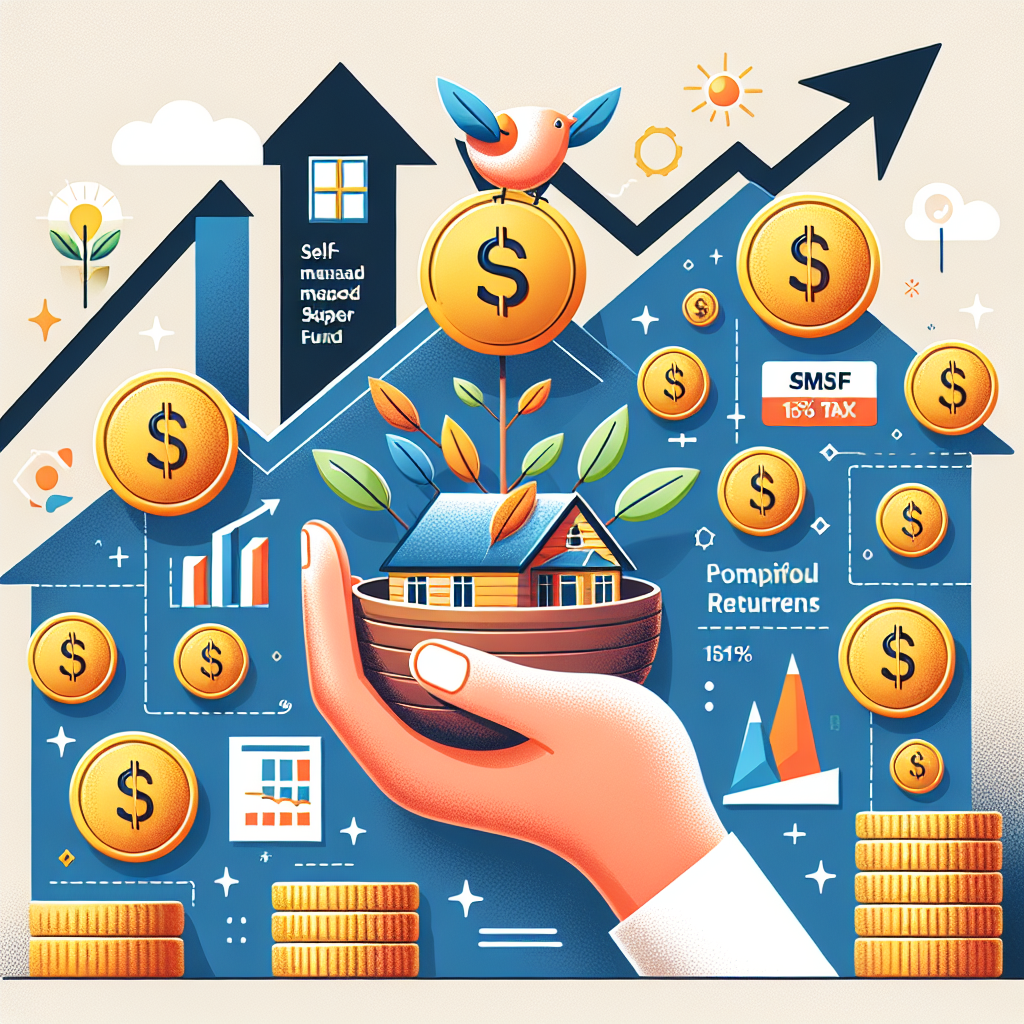In recent years, Australia has witnessed a remarkable shift in the Self-Managed Super Fund (SMSF) landscape. What was once considered a niche, idealistic approach to investing – sustainable SMSF investments – has now firmly established itself in the mainstream investment strategy for forward-thinking trustees. This evolution represents more than just a passing trend; it signals a fundamental reassessment of what constitutes smart, future-proof investing in today’s rapidly changing economic environment.
The latest data reveals a striking uptick in sustainable investment allocations within SMSFs. According to industry reports, there’s been a significant increase in SMSF trustees looking beyond traditional investment vehicles toward options that deliver both financial returns and positive environmental impacts. In fact, a growing proportion of SMSFs (31% versus 27% in 2023) are focusing on building sustainable income streams as part of their long-term strategy. This shift isn’t merely ideological – it’s pragmatic, calculated, and increasingly necessary in our changing world.
The Green Property Revolution in SMSF Investing
Sustainable property investing stands at the forefront of this movement, offering SMSF trustees a tangible way to align their retirement planning with environmental responsibility. But what exactly constitutes a sustainable property investment? At its core, it’s about properties that minimize environmental impact through energy efficiency, reduced carbon footprints, and thoughtful resource management.
For SMSF trustees, sustainable property investments offer multiple layers of benefit. First, there’s the immediate financial advantage of reduced operating costs. Energy-efficient buildings typically consume 30-50% less energy than conventional structures, translating to significantly lower utility bills – a direct boost to rental yield and overall return on investment. Water-saving fixtures, solar panels, and effective insulation all contribute to this operational efficiency.
Beyond day-to-day savings, sustainable properties often qualify for various government incentives, rebates, and preferential treatment under evolving regulations. This creates an additional financial buffer for SMSF investors who position themselves early in the green property market.
Perhaps most compelling is the alignment between sustainable SMSF investments and broader ethical responsibilities. Today’s investors increasingly understand that their capital allocation decisions have real-world consequences. By directing their SMSF funds toward environmentally responsible properties, trustees can ensure their retirement prosperity doesn’t come at the expense of future generations.
As one industry expert put it: “Sustainable SMSF investments aren’t just about doing good – they’re about smart risk management in a world where environmental factors increasingly impact asset values.“
Current Trends: The Market Speaks
The numbers tell a compelling story about the direction of SMSF property investment. Domain’s 2024 Sustainability in Property report reveals that the number of green homes has risen dramatically, with half of all houses and one-third of units now having green features. This isn’t just developer greenwashing – it’s a response to genuine market demand.
This demand is particularly evident in occupancy rates. Commercial properties with recognized sustainability certifications are experiencing vacancy rates approximately 10% lower than their conventional counterparts. For SMSF trustees, this translates directly to more reliable rental income – a crucial consideration for funds focused on stable retirement cash flow.
Consider the case of an SMSF that invested in a 6-star energy-rated office building in Brisbane’s inner suburbs in 2020. Despite the challenging commercial property market during the pandemic, the building maintained 95% occupancy throughout, with tenants citing the building’s sustainability credentials and lower operational costs as key reasons for remaining. Meanwhile, comparable conventional buildings in the same precinct saw occupancy drop to 70% during the same period.
The Environmental, Social, and Governance (ESG) factors now actively shape SMSF investment decisions across Australia. The Australian impact investing market has grown to USD 1.54 billion, with SMSFs playing an increasingly important role in this expansion. What’s particularly interesting is that 35% of Australians now express willingness to accept an average of 2.45% less return if it produces tangible social good – though sustainable SMSF investments often don’t require this sacrifice at all.
Maximizing SMSF Performance Through Sustainability
The financial case for sustainable SMSF investments extends well beyond current market trends. Evidence increasingly suggests that green properties deliver superior long-term performance – exactly the timeframe that matters most for retirement planning.
Several factors drive this performance advantage. First, sustainable properties tend to demonstrate better value retention and growth. As environmental regulations tighten and energy costs rise, properties that already meet high efficiency standards avoid costly retrofitting requirements and maintain their market appeal. This futureproofing aspect is particularly valuable for SMSFs with long investment horizons.
Maintenance costs represent another area where sustainable properties shine. High-quality, environmentally-friendly building materials often carry longer warranties and require less frequent replacement. Efficient systems mean less strain on infrastructure, reducing repair frequency. For SMSF trustees managing their fund’s cash flow, this predictability is invaluable.
The tax advantages cannot be overlooked. SMSFs enjoy concessional tax rates on rental income (15%), and when properties are held for over 12 months, any capital gains benefit from a further discount. When these inherent SMSF tax advantages combine with the potential for higher returns from sustainable properties, the compound effect becomes significant over decades.
A concrete example comes from a Melbourne-based SMSF that invested in a small sustainable apartment complex in 2018. The property’s solar system, water recycling, and passive design elements not only attracted premium tenants willing to pay 8% above market rates but also reduced common area costs by 40% compared to similar conventional buildings. The net effect was a total return approximately 3.2% higher than comparable non-sustainable investments in the same suburb over a five-year period.
As one SMSF trustee explained: “Our sustainable property investments have outperformed our traditional ones across every metric that matters – capital growth, rental yield, tenant stability, and maintenance costs. What started as a values-based decision has proven to be our smartest financial move.“
Investment Opportunities in the Green Housing Market
For SMSF trustees looking to capitalize on the sustainable property trend, several specific opportunities warrant attention. The most promising sectors combine strong environmental credentials with robust market fundamentals.
Emerging hotspots for sustainable SMSF investments include:
Urban infill developments with strong sustainability ratings – Properties in established areas that maximize land use while incorporating renewable energy, water conservation, and efficient design principles. These typically appeal to environmentally-conscious tenants willing to pay premium rents.
Retrofit commercial properties – Older commercial buildings upgraded with modern sustainability features often offer an attractive entry price with significant upside potential as energy costs rise.
Purpose-built green residential communities – Master-planned developments designed around sustainability principles are seeing increasing demand from both homeowners and investors.
When evaluating potential sustainable property investments for an SMSF, trustees should prioritize:
- Properties with verified energy ratings (minimum 6-star NatHERS)
- Inclusion of renewable energy systems, particularly solar
- Water-efficient fixtures and potential for water harvesting
- Use of sustainable, low-maintenance building materials
- Proximity to public transport and walkable amenities
- Adaptable design that will meet changing needs over time
The financial metrics for these properties often show slightly higher initial purchase prices (typically 5-10% premium), but this is generally offset by stronger rental yields (1-2% higher), better capital growth trajectories, and significantly lower operational costs over the investment lifetime.
According to industry experts, the demand for energy-efficient homes continues to rise, driven by environmental awareness and increasingly stringent legislative requirements. With upcoming mandatory climate-related risk reporting for Australian businesses and financial institutions starting in January 2025, properties with poor environmental credentials may face significant valuation challenges in the coming years.
Aligning Sustainable SMSF Investments with Long-term Financial Success
The transition toward sustainable SMSF investments perfectly exemplifies the core philosophy that drives truly successful retirement planning: making decisions today that create both immediate and long-term value.
At Aries Financial, we’ve observed that SMSF trustees who embrace sustainable property investing often experience a particular kind of investment satisfaction – one that combines financial success with the knowledge that their wealth creation strategy positively impacts the world their children and grandchildren will inherit.
Our approach to SMSF lending has always centered on empowering investors through education and tailored solutions. We find that sustainable SMSF investments naturally align with this philosophy. When trustees understand the multifaceted benefits of green property investing – from tax advantages to enhanced tenant appeal to improved long-term performance – they make more confident, informed decisions about their retirement funds.
The pathway to successful sustainable SMSF investing requires integrity in property selection, expertise in identifying truly valuable environmental features (versus cosmetic “greenwashing”), and the empowerment that comes from understanding how these investments perform over time. This approach mirrors our core values at Aries Financial and explains why we’ve seen such strong interest in sustainable property options among our SMSF clients.
Looking ahead, sustainable SMSF investments will likely move from being a smart choice to a necessary one. As regulatory environments evolve and market preferences continue to shift toward environmentally responsible options, properties without strong sustainability credentials may face increasing challenges in maintaining their value and appeal.
For SMSF trustees considering their next property investment, the message is clear: sustainable properties represent not just an ethical choice but a financially prudent strategy for securing retirement prosperity. The days when environmental considerations were seen as secondary to financial returns are rapidly disappearing. Today’s smart SMSF investor recognizes that the two objectives – doing well financially and doing good environmentally – are increasingly inseparable.
The green dream of yesterday has awakened into today’s financial reality. Sustainable SMSF investments have earned their place in the mainstream investment landscape not through idealism, but through consistently delivering what matters most to trustees – superior performance, reduced risk, and reliable returns over the long term.


